
Netflix India reduced their pricing yesterday and sent out a press release to this effect, as is the norm.
Here are the news reports about the announcement, on Medianews4u and Yourstory, for instance. (screenshots below since the reports could most probably be updated as soon as they read this post)
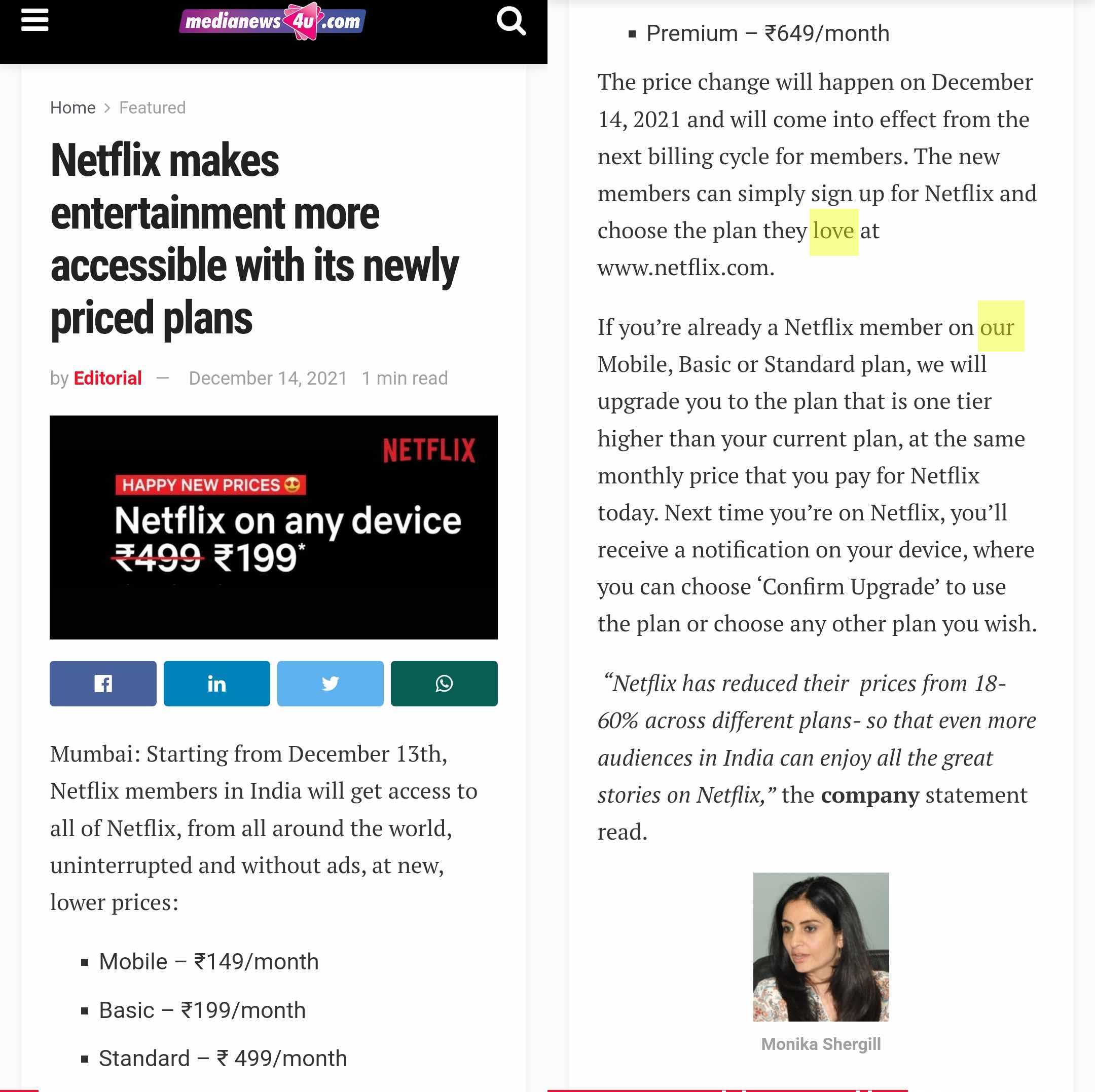
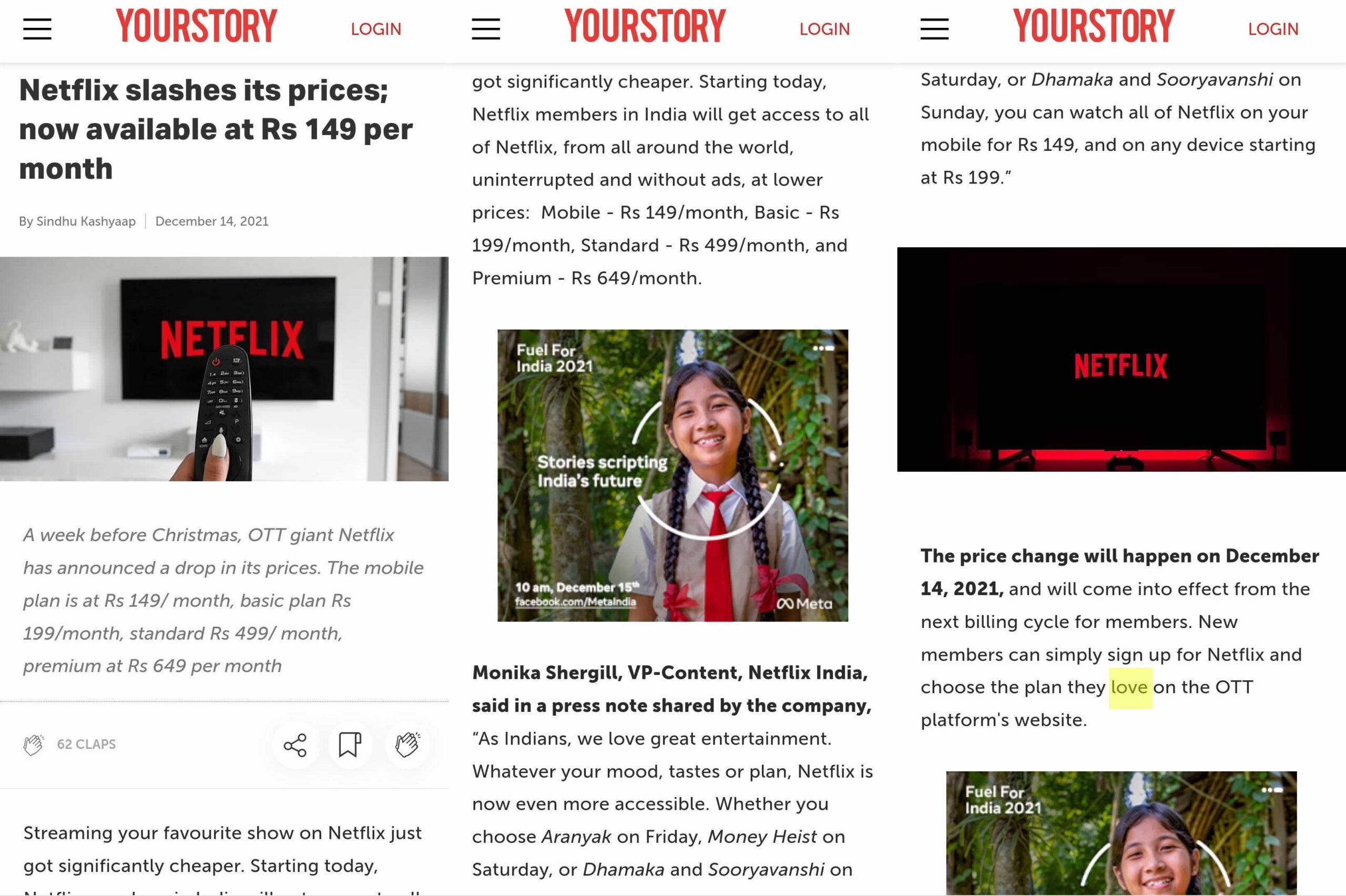
Notice something unusual?
Both Medianews4u and Yourstory have an identical sentence: “choose the plan they love” (in context to new members who are signing up for the first time). Why are media outlets like Yourstory (in a story credited to Sindhu Kashyap) and Medianews4u (in a story credited to ‘Editorial’) telling their readers to choose a plan they love on Netflix? Shouldn’t it be, “choose the plan that suits their budget”?
Then, take a look at Economic Times-Brand Equity‘s report on the same announcement. (screenshot below since it may be updated as soon as they read this post)
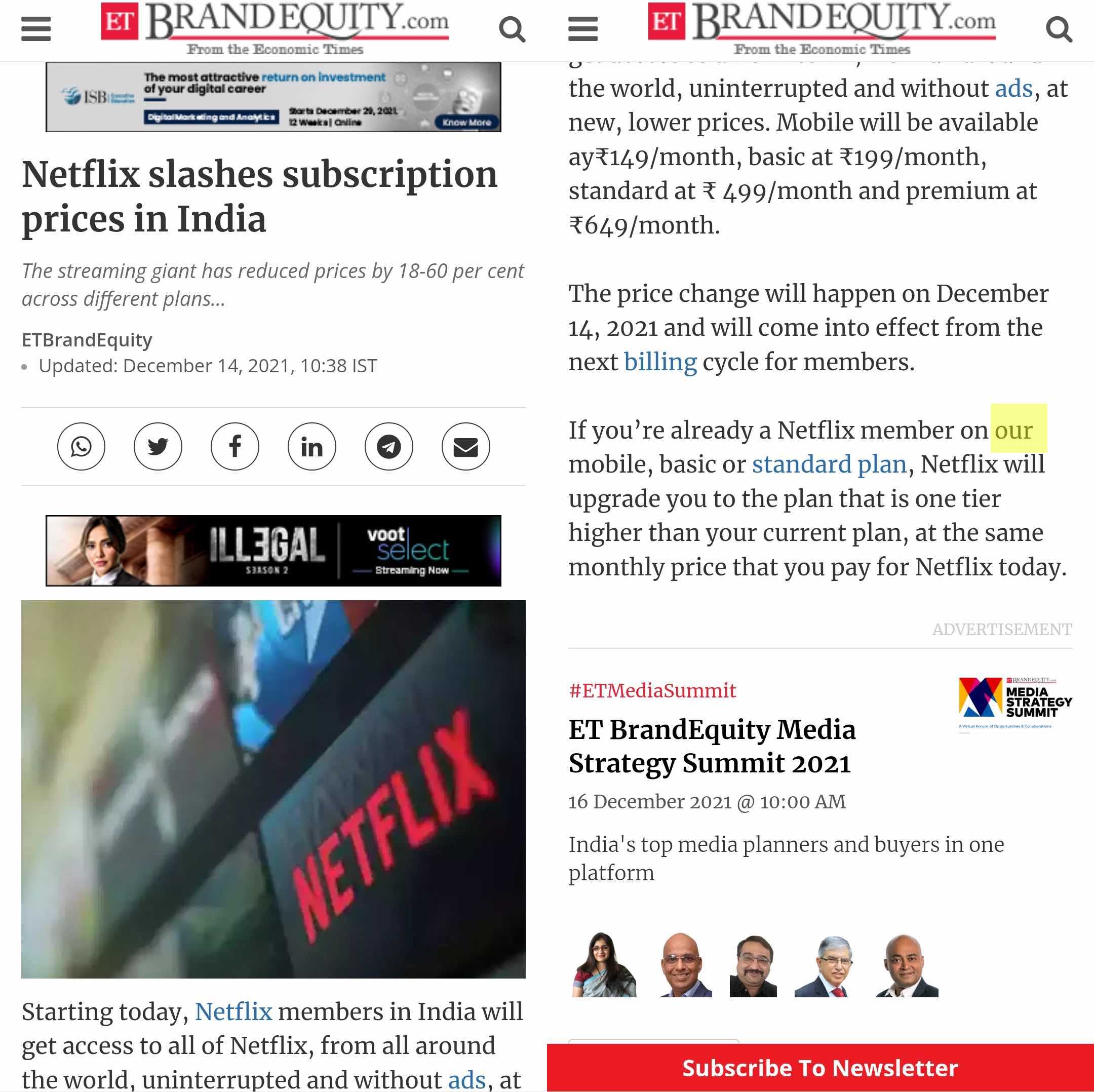
Notice something odd?
Observe this sentence: “If you’re already a Netflix member on our mobile, basic or standard plan, Netflix will upgrade you to the plan that is one tier higher than your current plan, at the same monthly price that you pay for Netflix today.”
‘Our’? As in Economic Times? Who is talking here – Netflix… or Economic Times?
Or, take a look at the news report on Adgully. (screenshot below since it may be updated as soon as they read this post)
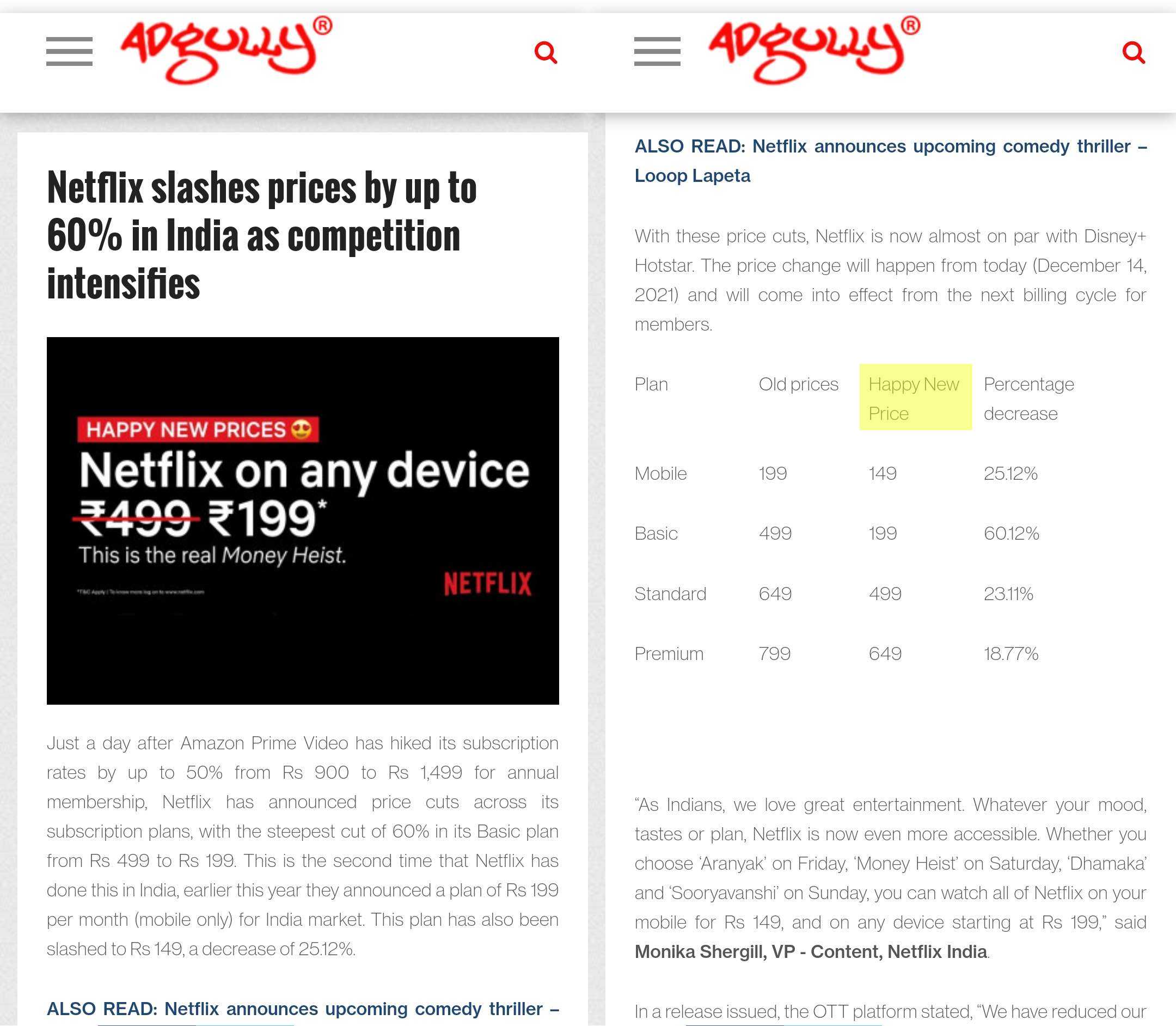
Notice something strange?
See that table? It has ‘Happy new price’! Who is happy about this new price? Netflix would surely want people to be happy about this new price – that is understandable. But why is Adgully calling it a Happy new price instead of just New price?
What exactly is going on here, with all these news publications?
Nothing much! The source of all these ‘coverages’ was the press release from Netflix India.
Here’s a snapshot of the press release, shared by Pranav Dixit on Twitter.

What do you see?
- ‘choose the plan they love’
- ‘If you’re already a Netflix member on our mobile, basic or standard plan…’
- ‘Happy new price’
And the section under which these are listed? It’s titled, ‘On background (not to be attributed to Netflix or Netflix spokesperson)’!
Words like ‘love’ or ‘happy’ are sentiments/feelings. News reports generally report the news without coating it with an emotion (either theirs or one that we are supposed to feel). When Netflix puts those emotions under a section that they mention cannot be attributed to the brand or a spokesperson, and the media organizations lazily copy-paste press release (already a much larger problem with Indian media) text as-is for their reports, the brand is able to cleverly sneak in what they want people to feel about the announcement in news reports (earned media)! That’s infusing advertising into editorial in an indirect way.
I recall explaining ‘on background’ during my days in PR, specifically in media training workshops. This ‘on background’ (also called sometimes as ‘not for attribution’) is a term in journalism/corporate communications that means that the reporter may quote the source directly but may not attribute the statements to the source by name. Usually, reporters attribute it to a designation or try to describe the source as fully as possible without naming them directly. This is different from ‘off the record’ that implies that the information shared by the source cannot be used directly by the concerned reporter/journalist. This is also quite different from many Indian reporters who simply pass off their source’s perspectives as their own!
‘On background’ is useful in certain situations when as a spokesperson, you may try to set the larger context about a topic. This could also be done directly with your name attributed to the context, but if you are sharing sensitive information about competitors that is available in an analyst report (for example), you can share that ‘on background’ and direct the journalist towards that report to get their own view about it.
But generally, ‘on background’ is based on trust and the prior relationship between a reporter/journalist and a spokesperson. When it is used on a press release that is sent to all media outlets at one go, that undermines the usage of that phrase that has a specific implication.
There is pushback on this practice in western media already. For instance, the data-driven investigative publication The Markup called out the use of ‘on background’ in October 2020 in a post and explained their stand that they would not participate in ‘on background’ conversations.
The instance they had cited in their post pertains to a story on Amazon by the nonprofit investigative publication Reveal and how Amazon responded to that story by sending a note to multiple publications that also included, ‘on background’, Amazon’s point of view about the reveal. But when it is under ‘on background’, reporters cannot write that Amazon believes/said that the publication is ‘misinformed and guided by a sense of activism’!
‘On background’, hence, becomes a tool for companies, PR agencies, and corporate communications teams to say things but not be held responsible for them!
Most recently, in November 2021, The Verge updated its ‘on background’ policy in a long note explaining why they are doing so.
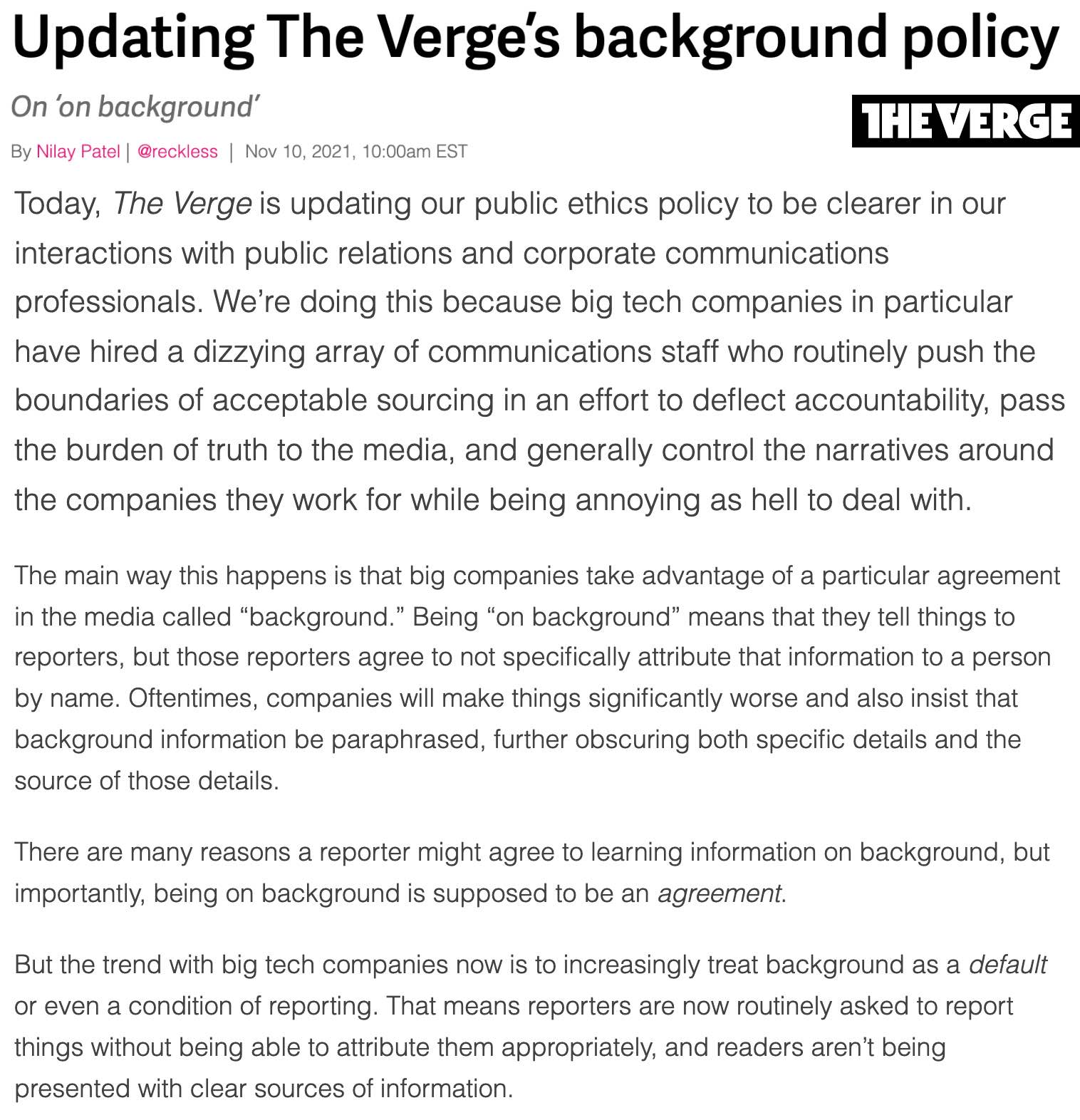
The note from Verge editor Nilay Patel is brilliantly articulated and is a compelling read for PR and corporate communications professionals. The crux is this: ‘on background’ is an agreement that needs to be explicitly and directly mentioned to a reporter and mutual consent sought, to adhere to it. It cannot be used as a section in a press release so that it can be rampantly misused.
The Verge’s clear update is this: “From now on, the default for communications professionals and people speaking to The Verge in an official capacity will be ‘on the record’. We will still honor some requests to be on background, but at our discretion and only for specific reasons that we can articulate to readers.”
As you can see, the many uses of ‘on background’ make it a dicey tool to be used in public relations and corporate communications. In the Netflix India example above, it was used to feed in a specific sentiment that Netflix wanted their users to feel, but used ‘earned media’ to get that out cleverly. Those were not the reporters’ words, but Netflix’s, even though no Netflix spokesperson was quoted for that word/sentence (even as they are quoted elsewhere).
In the western media example, the use of ‘on background’ is more insidious: ‘provide their point of view to the media without being accountable for it’ (as The Verge frames it eloquently).
The broader lesson for PR and corporate communications professionals is this: assume, by default, that anything you (or your spokespersons) say can (and maybe) be attributed to you/them. So, do not say anything that you do not want to see on the front pages of the newspapers the next day. Use ‘off the record’ or ‘on background’ judiciously based on the kind of relationship you have with the concerned/specific reporter/journalist/editor.
As for media outlets and publications, online or print: please be better than copying-pasting press releases as-is and degrading the readers’ trust.
